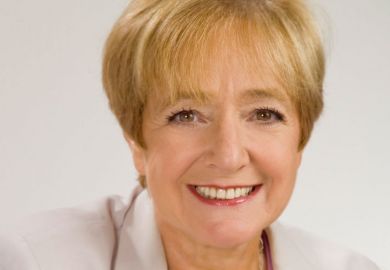Dropout rates remain higher at private colleges than in the rest of the English sector, while the UK government has failed to recover £36 million of public money paid to “ineligible” students at such institutions, according to the public spending watchdog.
A National Audit Office report published on 18 October – which finds a dropout rate of 25 per cent at alternative providers designated for public student loan funding – says that while the Department for Education has made progress towards “addressing weaknesses” in its oversight of such providers, it “still has important issues to address before it can provide assurance that it has a firm grip on current or emerging problems”.
The report is a follow-up to the NAO’s 2014 inquiry into public funding for students at private colleges, which led to a scathing Public Accounts Committee verdict on the government’s failure to control public spending at private colleges.
The new NAO report spotlights 11 alternative providers with non-continuation rates above their benchmarks and all subject to DfE action as a result, including large institutions GSM London and BPP University. BPP recently had its continued eligibility for degree-awarding powers and university title approved, following the sale of its US owner to a private equity consortium.
The report looks at the legacy of the last wave of alternative provider expansion under the coalition government – in which a number of for-profit colleges rapidly grew their numbers of students with publicly funded loans mainly via sub-degree Higher National courses awarded by Pearson – just as the Conservative government is about to make it easier for new providers to offer their own degrees.
In response to concerns about that uncontrolled growth, the government imposed student number controls at alternative providers, meaning that the total of Student Loans Company funding paid out to students at those institutions declined from £724 million in 2013-14 to £417 million in 2015-16, the NAO says.
The proportion of students at alternative providers dropping out declined from 38 per cent in 2012-13 to 25 per cent in 2014-15 (on data from a subset of institutions with designation and sufficient numbers of students), finds the report. But that is 3 percentage points higher than the alternative provider sector benchmark and 15 percentage points higher than the rest of the higher education sector, it adds.
The NAO reports uses data published by the Higher Education Statistics Agency earlier this year to identify 11 alternative providers with dropout rates above their benchmarks, including the College of Integrated Chinese Medicine, based on the profile of their student population.
The highest, SAE Education Limited, 55 percentage points above its benchmark in “other undergraduate provision”, is no longer designated for SLC funding in that category, the report says.
BPP and GSM, about 5 percentage points above their benchmarks in “first degree” provision, have both had “an existing improvement notice…maintained” in that category by the DfE, the report says.
The NAO also says that the DfE “has not recovered £36 million of the £45 million ineligible payments [in SLC funding to students at alternative providers] it identified in the six years to 2015-16”.
A previous problem of payments being made to ineligible European Union students, now addressed, accounts for some of that total.
But the DfE “could not, without further analysis, tell us the reasons why £19 million was paid to ineligible students, mostly since 2013-14”, says the NAO.
The NAO says that there are “indications” that alternative provider expansion “has helped widen access to higher education for unrepresented groups of students”, given the profile of students attending these providers.
But it offers a series of recommendations for action to the DfE and the new Office for Students, which will take responsibility for oversight of alternative providers when it starts operations next year.
The DfE “does not have sufficiently timely and specific data to allow prompt measurement of the level of ineligible payments or analysis of trends” and also “lacks reliable and timely data on non-continuation rates so does not impose prompt sanctions on under-performers”, says the NAO, calling for action in both areas.
Register to continue
Why register?
- Registration is free and only takes a moment
- Once registered, you can read 3 articles a month
- Sign up for our newsletter
Subscribe
Or subscribe for unlimited access to:
- Unlimited access to news, views, insights & reviews
- Digital editions
- Digital access to THE’s university and college rankings analysis
Already registered or a current subscriber?







